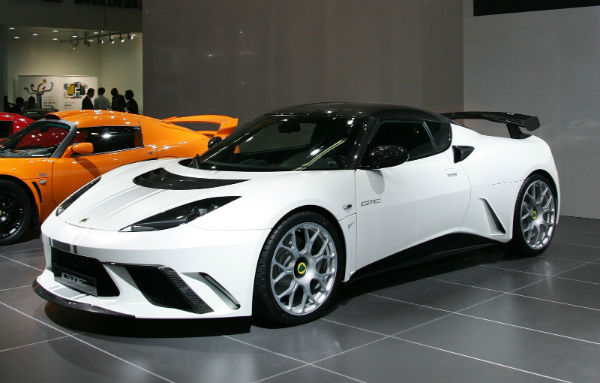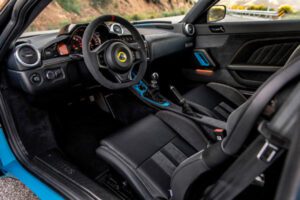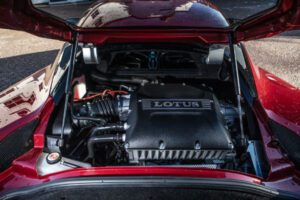2023 Lotus Evora
The 2023 Lotus Evora is a sports car manufactured by British carmaker Lotus. 2023 Lotus Evora is the first product of a five-year plan launched in 2006 to expand the Lotus range beyond its track-specific offerings and produce a practical road car that appeals to the main market. The Evora is currently the only Lotus model with a 2 + 2 configuration, although it is also available in a two-seater configuration called the Plus Zero variant. The 2023 Evora and BMW i8 are the only 2 + 2 mid-engined coupes on sale. The interior is larger to accommodate tall passengers, such as Mike Kimberly, former CEO of Lotus, and two people who are 6’5 inches (195.6 cm) tall.
The name Evora preserves the Lotus tradition of model names beginning with the letter E. The name is derived from the words evolution, fashion, and aura. Other names were Eagle, Exira, and Ethos; Eagle and Ethos were rejected because they would be hard to claim as a trademark for Lotus. The cooled boot on the back of the engine is large enough to fit a set of golf balls, but Lotus design chief Russell Carr denies it was intentional. Lotus wants to compete with Evora in various market sectors, including the Porsche 911.
2023 Lotus Evora : Interior
The 2023 Evora GT can accommodate two or four passengers, depending on whether you choose to equip it with an optional rear seat. The adults find it impossible to squeeze Evora into the back seat, like getting stuck in a child seat. The cabin is upholstered in artificial suede and has aggressive Sparco carbon fiber front seat standards. The design of the control panel is not modern, it confuses the physical switch with a cluster of devices that look great. This allows owners to choose non-standard paint colors and custom leather upholstery. Unfortunately, Evora’s narrow cabin and thin cushioned front seats aren’t comfortable for long. The quality of the interior construction is also questionable, with rattling decorative parts and moldy doors. According to its driving feature, there is only a small amount of luggage space under the rear hatch, there is no front luggage and there is not enough space to store the inner cabin.
For Evora Apple CarPlay and Android Auto also come standard with a 7.0-inch touchscreen that supports built-in navigation, the Alpine audio block looks like it was removed from a shelf in an electronics store. Not only is it appropriate in the interior, but there are no intuitive volume or adjustment buttons. Instead, the user has to rely on small buttons that cover the bottom of the frame to adjust the volume and change stations. Those looking to upgrade their stereo can opt for an amplifier and subwoofer.
2023 Lotus Evora : Engine
The Lotus Evora GT has a 3.5-liter V-6 mounted in the middle, producing 416 horsepower and 317 or 332 pound-feet of torque; six-speed automatic transmission cars get extra torque. Power is transmitted to the rear wheels, while the mechanical transmission adds a limited-slip differential for better traction. Evora went from zero to 60 mph in 4.0 seconds and covered a quarter-mile in 12.4 seconds at 111 mph. Its Toyota-produced V-6 is smooth and wavy, and its supercharger makes an exciting scream when the needle exceeds 4500 rpm.
The 2023 Evora GT is powered by 19-inch wheels on the front and 20-inch wheels on the rear, which are wrapped with ultra-sticky Michelin Pilot Sport Cup 2 tires. This setting helped our tester produce a 1.04g speed on the skidpad and stop at 70 miles in just 148 feet. The EPA lists two different city and highway ratings for the Evora GT. With the automatic transmission, it is expected to earn 17 mpg in the city and 24 on the highway. Models with a manual transmission are associated with the same city rating, but the high price of the trunk is 26 mpg.
2023 Lotus Evora : Safety
The 2023 Evora GT has not passed an accident test by the National Highway Traffic Safety Administration (NTHSA) or the Highway Safety Insurance Institute (IIHS). Those who care about having the latest technology to help drivers will be disappointed, as Lotus saves weight and reduces complexity, leaving all safety nurses out, except for the rear stop sensors.


